Notes Toward a New Language: On Dieter Roth
BY Cynthia Cruz
I would call myself an inventor of machines that are meant to entertain (or inspire) feelings (or thoughts) that help to digest this Central European civilization wading in junk. --Dieter Roth
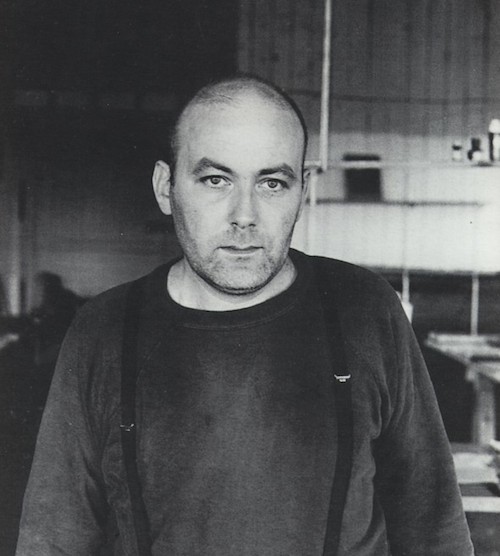
Dieter Roth worked in accumulation, detritus, debris and silt. He worked with shit and its near approximations: chocolate, sausage, cheese, and birdseed, making innumerable batches of busts in chocolate and figurines of rabbits from straw and rabbit droppings. He never settled down, just as his work never quite settled, always shifting and moving. Accumulating, then shifting again, his work was a reenactment of his childhood, an extended meditation on chaos and rootlessness.
Born in Germany in the spring of 1930, he was able, due to his father’s Swiss citizenship, to flee the war in Germany and gain asylum to Zurich. But the trick of this was that his parents remained behind; Roth went to live with strangers and was not reunited with his parents again until 1946. Although he may have been protected from the war, what he got instead was a childhood study in detritus. Living as if an orphan, he stayed in another family’s home filled with other misplaced wanderers. Describing his childhood, Roth said, “Hell broke loose but Roth survived, beatings and scoldings he survived, shitting and pissing in his timid pants poor shaking little turd, he even managed to live through that rainstorm of bombs and grenades, awful smashing horror, brought about on all, the living and the dead.” Yet it was here, in this house filled with chaos, that Roth was introduced to making poetry and art.
The trauma of his childhood followed Roth like a ghost, telling him the lie, at every turn, that he was useless. And though Roth began his career as both a poet and visual artist, he turned his back on poetry in 1953 when he received criticism for his work, published in the journal, spirale. Roth said later, “The great judges of European literature and art are located somewhere in my head and play the judge there and do me in. I have to keep watching out that I don’t offend them.” He did not try his hand at poetry again until his Sheisse (Shit) poems thirteen years later in 1966.
In Artforum (September 2003), Daniel Birnbaum wrote of Roth:
In 1966 he published a collection of poems under what he later called the “ironic = anxious neutralizing” title Scheisse—Neue Gedichte von Diter Rot (Shit—New poems by Diter Rot), soon to be followed by other collections of “more shit,” “damn shit,” “complete shit,” and so on. In the first volume, the poem “ mein Auge ist ein Mund” (my eye is a month), formulates the basic parameters of a lifelong attempt to break out of traditional aesthetics as something linked to vision and to question the hegemony of the eye and the ocular metaphors that dominate all discourse about art. Here he establishes the notion of an all-encompassing metabolism, and also draws scatological conclusions:
my eye is a mouth
my eyelids are the mouth’s lips
my eye lashes are the mouth’s teeth
my eyeball is the mouth’s tongue
my iris is the top of the tongue
my pupil is the mouth’s kiss
my eye socket is the mouth’s palate
my optic nerve is the mouth’s pharynx
my brain is the mouth’s stomach
my images are the mouth’s digestion
my life is the mouth’s excrement
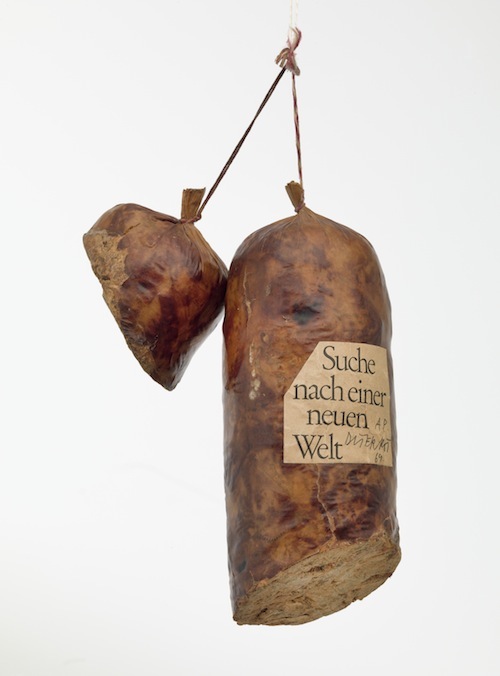
Feeling perhaps that his creative choices could not be trusted, Roth, instead, created a system of no choice: working only with whatever was close at hand. An early example of his determination not to engage in decision making was a work he called a “poetry machine,” a black page of paper with holes. Held over text, the “machine” made the artistic decisions for him, determining which words to use. In this scenario, he couldn’t be blamed for making the “wrong” poetic decisions. Here, chance was God.
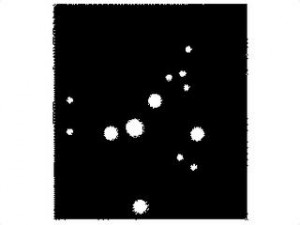
Roth’s idea of chance is, of course, quite different from someone like John Cage. Whereas Cage’s “chance” originates in a sense of playfulness as well as spirituality, Roth’s idea of chance originates, instead, in insecurity and a desire to be free from the tyranny of choice. Trapped inside the mess of his own accumulation, Roth made for himself a kind of diorama of his childhood: a whir of chaos and madness, as if by doing so he might somehow be able to speak to the dark cut of trauma inflicted on his psyche in childhood. Too, he was known to not be able to let things go: collecting ephemera from the street, refusing to throw out his own waste. Collecting it, instead, and using it in his work.
Roth used whatever was at hand whether that was trash he’d collected, newspapers or magazines, toys or food. His son Bjorn writes that at Roth’s fortieth birthday, his father suggested they take his birthday cake, put it under glass, and include it in his creation. Nothing escapes Roth, everything is included. His method was to glue down whatever his hand reached for. And in this way the idea of chance comes in, again. By including everything, by throwing out nothing, Roth refused to make a choice; he refused to play God. By removing the option of choice, by not making any decisions regarding his artwork, he played dumb. About Snow, one of his many books, Roth wrote:
I photographed everything, people and objects that were all knobbly and letter boxes and...the stuff that caught my attention...each evening I took everything I had touched that day, absolutely everything I had touched in the way of paper, regardless of whether they were drawings, sketches, photos, or simply the paper I’d used to wipe the printing plates, I spread it all out and tacked it to large boards covered with stretch fabric. And after three months work, I had about 2.000 things...and then at the end of these three months I stapled about, I don’t know...about 200 or 300 of these things together to make a big book.
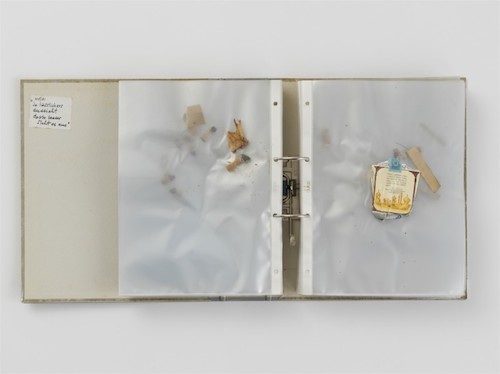
Roth is unable to say no. He collects and hoards and, on doing this, in both forbidding himself his basic needs as well as taking in everything, Roth becomes a kind of gaping mouth. His work, in turn, does the same.
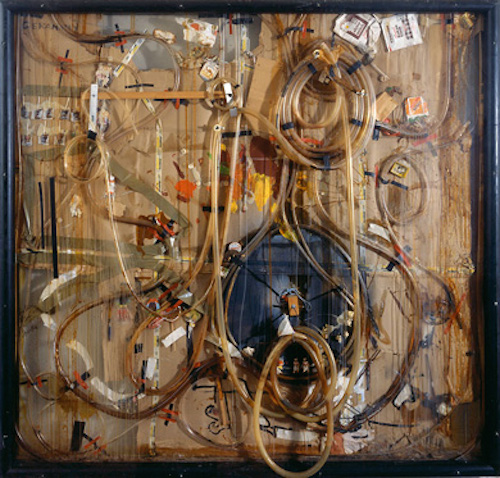
Dieter Roth’s work enacts clutter, chaos, and accumulation. To clutter is to fill with things or noise, is to crowd out thought or space. To clutter is to drown one’s self out, to turn the dial of the mind off. Like drinking alcohol or taking opiates, to clutter, to collect compulsively, is an overture to melancholia. To clutter is to collect, to archive, is to resist. After a terrible trauma, one often finds one’s self cocooning one’s self inside an endless archive. As an animal constructs a nest, man clutters to crowd out the din of the world or, conversely, to crowd out the din of the mind. The clutterer or compulsive collector is no longer "alive.” Both in denial of death while, simultaneously, existing in a kind of living death. Numb to the world, and numb to one’s self.
Roth’s insistence on chance, his refusal to settle on any one style, as well as his embrace of constantly adding to his work are ways to keep the work alive, to attempt, in fact, to escape death. In an interview in Stuttgarter Nachrichten, Roth said: “Art is finished for me. Because it has nothing more to say, it can’t tell the truth. As soon as a drawing is hung on the wall it no longer has anything to say. It’s simply there for the eye to look at.” Process was life, product was death.
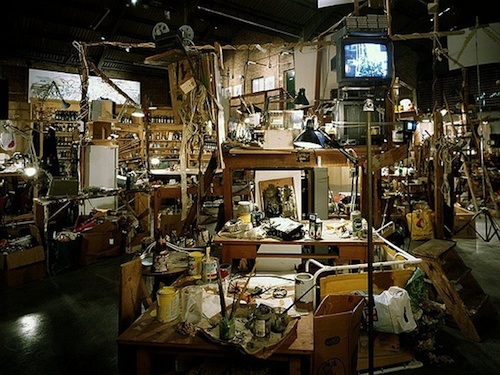
Claude Levi Strauss’s description of the “bricoleur” describes Roth’s method. In his book The Savage Mind, Levi-Strauss writes: "The ‘bricoleur’ is adept at performing a large number of diverse tasks. His universe of instruments is closed and the rules of his game are always to make do with ‘whatever is at hand,’ that is to say with a set of tools and materials which is always finite and is also heterogeneous because what it contains bears no relation to the current project, or indeed to any particular project, but is the contingent result of all the occasions there have been to renew or enrich the stock or to maintain it with the remains of previous constructions or destructions."
Indeed, making the decision not to use any additional items in his artwork, to use only the materials at hand is, of course, in itself, a decision. It is a means of stating which objects are and are not important. In this case, what Roth is saying is that it is preferable to use materials found in the home rather than the traditional art tools such as paint, canvas, pastels, brushes and so on. By choosing to use only the materials found in a workshop such as foodstuffs, tape, glue, nails, screws, and newspaper, Roth is aligning himself with the working class.
Roth’s works become like collages or poems, even, each item introduced becomes one more symbol, one more added meaning. Again, in The Savage Mind, Levi-Strauss writes, “...he ‘speaks’ not only with things...but also through the medium of things: giving an account of his personality and life by the choices he makes between the limited possibilities. The ‘bricoleur’ may not ever complete his purpose but he always puts something of himself into it.” Roth creates his own language utilizing fragments from the world and his culture. In this way, he is able to defuse the culture and its inherent power. In this way, he creates an alternative language and culture.
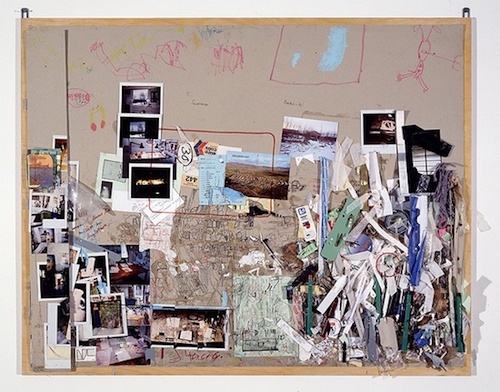
Another definition of the bricoleur comes from the French philosopher, Michel de Certeau. In his book, The Practice of Everyday Life, de Certeau defines the idea of bricolage as the way in which each of us practice common everyday activities. It is a way, de Certeau claims, for us to "make do." This definition of bricolage applies to Roth perhaps most of all, because it repositions the act of bricolage as something one does to survive. And though Roth is making art, it appears, too, that he is, at the same time, frozen inside a drone of clutter, of chaos. It is almost as though the making of art is a mere byproduct. Inside this cacophony, we see Roth reaching for something (a block of melting chocolate, a rabbit pellet, an old newspaper) and by adding this new element to the work at hand, Roth takes one more step toward staying alive.
Cynthia Cruz is a poet, novelist, and nonfiction writer. She is the author of the poetry collections...
Read Full Biography

